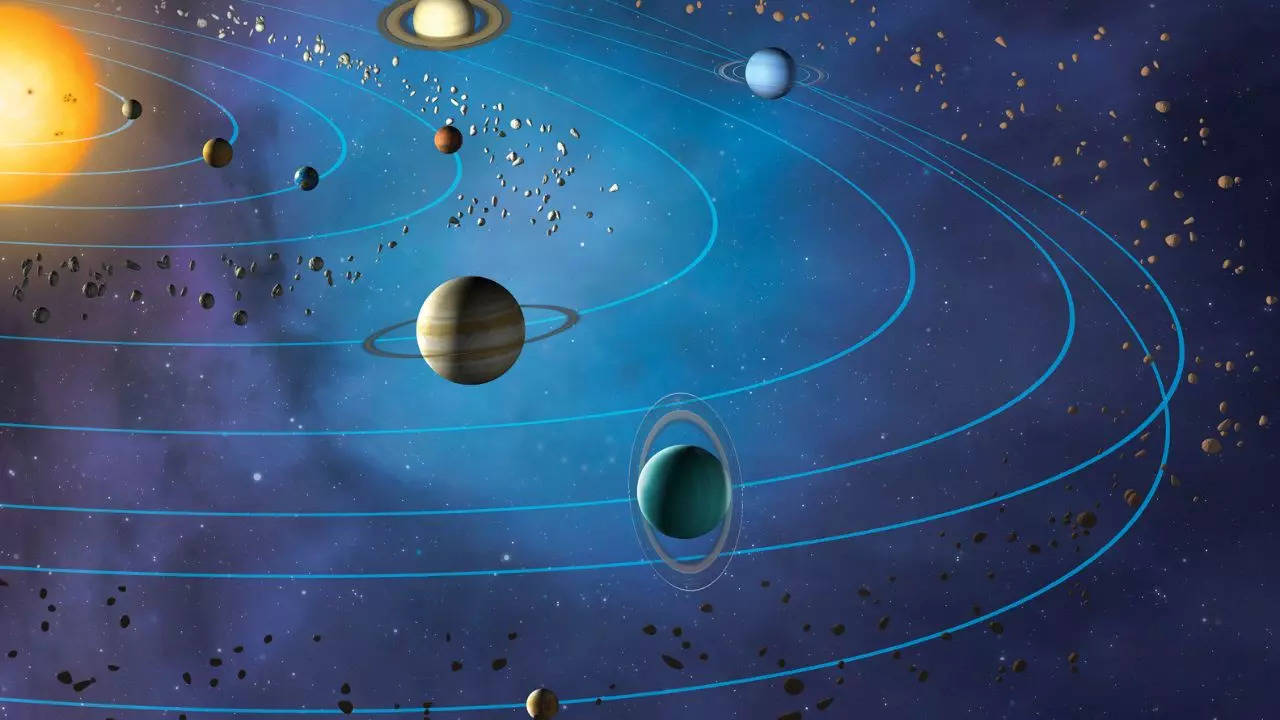Weeks after the total solar eclipse, another celestial event awaits stargazers—a rare alignment of six planets in the early morning skies. Let’s delve into what this alignment entails and how to observe it.
Understanding Planetary Alignment
- Planetary alignment refers to the positioning of planets in the solar system such that they appear to form a straight line or close to one when observed from Earth.
- It’s an illusion of perspective rather than actual perfect alignment in space.
The Rare Cosmic Event
- Mercury, Mars, Jupiter, Saturn, Uranus, and Neptune will align, offering a remarkable sight.
- Not all planets will be visible to the naked eye due to their distance from Earth.
- The Moon’s presence may hinder visibility.
Visibility of Planets
- Mars and Saturn will be visible without optical aid, while Mercury and Jupiter may require telescopes or binoculars.
- Uranus and Neptune will be challenging to spot without high-powered equipment.
Timing and Location
- Saturn will appear first in late night hours, followed by Neptune.
- Mars will rise later in the night and be easily visible.
- Uranus, Jupiter, and Mercury will be visible at dawn.
- Research the alignment date and time beforehand.
- Choose a viewing spot with a clear horizon and minimal light pollution.
- Check the weather forecast for clear skies.
Multiple Choice Questions (MCQs):
- What celestial event follows weeks after the total solar eclipse?
- A) Lunar eclipse
- B) Planetary alignment
- C) Meteor shower
- D) Comet sighting
- Answer: B) Planetary alignment
- What is planetary alignment?
- A) Perfect alignment of planets in space
- B) Illusion of planets forming a straight line when observed from Earth
- C) Alignment of planets only visible during solar eclipses
- D) Occurs when planets collide in space
- Answer: B) Illusion of planets forming a straight line when observed from Earth
- Which planets will align during the rare cosmic event?
- A) Venus, Earth, Mars
- B) Mercury, Venus, Mars
- C) Mercury, Mars, Jupiter, Saturn, Uranus, Neptune
- D) Saturn, Jupiter, Neptune, Uranus
- Answer: C) Mercury, Mars, Jupiter, Saturn, Uranus, Neptune
- Why may some planets not be visible to the naked eye during the alignment?
- A) Due to their small size
- B) Because they are too close to Earth
- C) Because of their vast distance from Earth
- D) Because of their dim brightness
- Answer: C) Because of their vast distance from Earth
- What should observers do to enhance their viewing experience?
- A) Use high-powered telescopes
- B) Check the weather forecast
- C) Visit a local observatory
- D) All of the above
- Answer: D) All of the above
